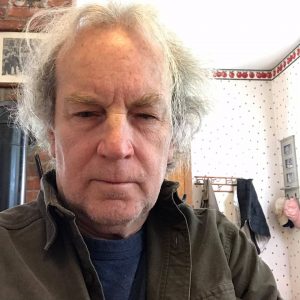When City officials in Ventura, California found out two years ago that Wal-Mart was scouting the area for possible store locations, they began stepping up efforts to develop growth guidelines that prevent standard “big box” stores in their community. In January, 2007, the City Council adopted a 20-year “smart growth” plan for a seven-block area along Victoria Avenue that calls for more offices and pedestrian-friendly development. Last week, the council passed an “urgency” ordinance on Victoria Avenue that requires a building greater than 50,000 s.f. to undergo a special review and a use permit. City planners tell the Ventura County Star that Wal-Mart Stores appears to be willing to meet the city’s new development guidelines, which are still in the drafing stage. The guidelines would force Wal-Mart to reduce the size of its store to a 60,000 s.f. maximum, and build it on two stories. The giant retailer apparently has its sights set on a Kmart property that is about to close. “We are going to continue to work with the city to come to an agreement that is best for the community and the company,” a Wal-Mart spokeswoman told the newspaper. Big box opponents in Ventura have made it clear that a huge store will provoke a confrontation because of the increased traffic, low-paying jobs and impact on independent business owners. “We want to make sure that what replaces the Kmart — or any other property on Victoria — will be a high-quality design,” said one city Councilor. The Wal-Mart spokesman said she could not name a Wal-Mart store around 60,000 s.f., but she would not rule out the possibility of a first in Ventura. “We will consider all opportunities. We would love to serve our customers in that market.” Ventura City Manager Rick Cole told the newspaper, “We have made it perfectly clear that Wal-Mart is welcome if they follow the rules.” Wal-Mart could propose a three-story, 90,000 s.f. building, but it would need a zone change, and would have to be part of a larger regional entertainment and shopping hub, city planners told the newspaper. A coalition of business owners, religious leaders and community activists have told city officials they want a review process that measures a project’s impact on traffic, housing and municipal services. “They are only talking about the form and design of the building,” said a representative from Livable Ventura, which used to be called the “Stop Wal-Mart Coalition.” “They are not looking at all the other impacts. It’s not just Wal-Mart. We wouldn’t want a Target at that site, either.”
On January 29, 2006, Sprawl-Busters reported that Ventura officials had voted to enact a one year moratorium on retail development along heavily-used Victoria Avenue. The 12 month freeze was designed to give planners a chance to carefully plot out development goals for the six lane roadway. “This is not about Wal-Mart the company. This is about big boxes in places they don’t belong,” one city official noted. “That said, we don’t think it would be the worst thing in the world to be the first ones in Southern California to break the Wal-Mart mold.” Wal-Mart had proposed a 109,000 s.f. discount store for Ventura, on the site where a Kmart now stands. There are already two other Wal-Marts in Ventura County. Ventura Mayor Carl Morehouse said that the city needs to clearly define what the development goals are going to be along this important corridor in the city. “Developers like clarity, so we better be clear about what we want there. Wal-Mart can decide whether to play by our rules after we have defined them.” Local officials often passively approach their role with developers, telling local residents they would do more, but if the developer follows all the rules, there’s nothing they can do. In fact, if communities tell developers what they want, they usually get it. Zoning ordinances can be interpreted as the minimum standards needed for projects, not the maximum. Size limits are no longer theoretical, and the fact that Wal-Mart is still at the table in Ventura shows that if a community leads, Wal-Mart will follow. In the world of development, cities and towns have a clear choice: Plan, or be planned upon. For earlier stories, search Newsflash by “Ventura.”

